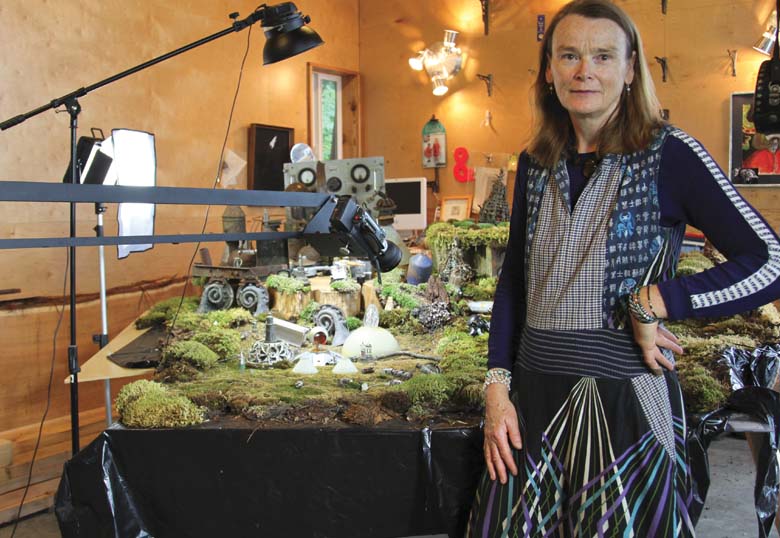University of Lethbridge Faculty of Education professor Dr. Janice Rahn researches as an artist and writer. She works between the Faculty of Education and the Faculty of Fine Arts to question how art practice informs curriculum theory in project-based inquiry. Rahn often collaborates with partner, Michael Campbell (Faculty of Fine Arts).
Legacy sat down with her to speak about her research.
Legacy: When did your collaboration begin?

JR: We met in 1992 while doing our MFA programs at Concordia University in Montreal. We created a museum-like exhibition that changed daily as we worked on-site transforming materials we gathered from the Laurentians, Quebec.
Legacy: How many collaborative works have you produced?
JR: We collaborate every day in our conversations about teaching, in discussing ideas for art projects, and in actually building large audio/video sculptural installations.
Legacy: Do you have your individual practice as well?
JR: Yes, we both feel a need to produce and show our own work, especially after working intensely together on a collaborative project.
Legacy: You said that you collaborate in your teaching as well as your art practice?
JR: We talk about teaching all the time and we are always building project assignments together. Video Sketchbook (Michael’s class) was my favorite course to build and to be part of. I wrote a chapter about it in my recent book Viewfindings. I also enjoy co-teaching his printmaking classes, especially the critiques, though it is not part of my teaching load. We define project-based learning as being clearly designed by the instructor with parameters in the sequential introduction of new materials and problems, while inviting students to develop their own ideas. We show a wide range of carefully selected examples to inspire students to explore possibilities in working with materials in relation to concepts.
Legacy: You work as an artist and you have published extensively. Is there any link between these two forms of research?
JR: When I was doing my PhD I saw a need for curriculum theory based on art practice. As a teacher in the Arctic, I had elders making art in my classroom. In Montreal, I did my PhD researching street art. I started making videos as a way to document and analyze my artist in the school projects. My art practice is a continual exploration of new materials and ideas. This gives me the resources to help individual students achieve success in different contexts. It also informs my belief in problem solving through project-based learning and the critique process as formative assessment.
Legacy: What are you working on at the moment?
JR: In 2012 we built a 65 foot-long sculpture out of bamboo, with other related pieces including a video, during a month-long residency at the International Triennial in Kathmandu. We just exhibited a video at the Palais de Tokyo in Paris. In Dec. 2014, we are building a site-specific sculpture in an 18th century public exotic garden estate in the South of France. We have been re-invited to exhibit in Kathmandu in 2015. We choose to constantly explore new materials, to travel and to make art together.
Legacy: What has been your main research focus in art education?
JR: Identity development in young people, peer influence, learning communities, performing/communicating in public space, the rigor of creating and the effects of the critique on thinking. Art in education is often viewed as a frill. Art Education values each person’s diverse development, invites empathy, and the provocation to change entrenched assumptions. For example my work with new media and visual literacy compares intent in art that questions, with the closed agenda of propaganda.
Dr. Janice Rahn was named Board of Governors University Scholar in 2012, a program that recognizes the excellence of faculty members in the areas of research, scholarship and creative performance.
As an artist, Rahn has been working on a series of female arbor forms, in porcelain, bamboo and willow. She has created charcoal/ink drawings, and monoprints showing them at her gallery The Vidourle Prix in Sauve, France. She also makes documentary videos and audio video installations, most recently shown at the Kulteren der Welt in Berlin. For more on her work, visit her website.
